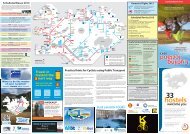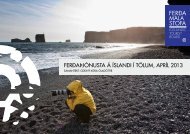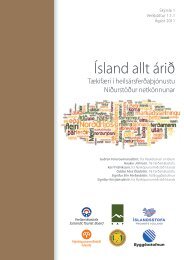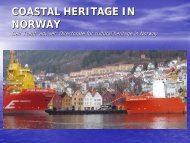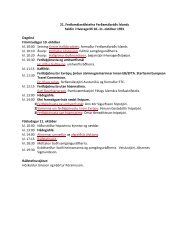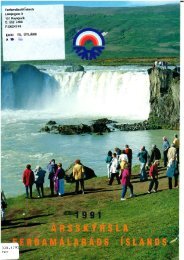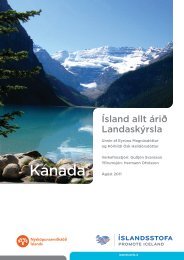Untitled
Untitled
Untitled
Create successful ePaper yourself
Turn your PDF publications into a flip-book with our unique Google optimized e-Paper software.
alternatives need to be developed as alternatives to the current high carbon<br />
mobility system.<br />
The discourse of climate change, together with the present scenarios<br />
of peak oil and the goal of a low-carbon society, have thus brought to the<br />
fore the centrality of mobility to social life and urgent pressures to<br />
drastically reduce or develop alternative mobilities. Mitigation strategies<br />
mean that all kinds of mobilities and movements dependent on fossil-fuels<br />
must somehow be reduced, or replaced by other alternative energy sources,<br />
in order for a low carbon society to emerge. Changes are likely to come,<br />
for example through modifying economic incentives, tax changes and<br />
international agreements and policies. For tourism there may soon come<br />
times when serious restrictions are put on its mobility. According to<br />
Dennis and Urry:<br />
It is clear that air travel would need to be the most heavily rationed of<br />
the forms of transport that have so far become commonplace (Dennis<br />
and Urry 2009, p. 157).<br />
With a current annual growth rate of about 5% in the Western world,<br />
the emissions from flying are expected to about triple in less than 25 years<br />
and probably far more if one considers the potentially enormous growth<br />
expected from China and other rapidly industrialising nations. This implies<br />
that the “energy demands of tourism transport will undoubtedly be a focal<br />
point for new regulatory structures” (Hall 2005, p. 343). With regards to<br />
aviation, which indeed is central for tourism mobility, it has “been<br />
identified as a significant and rapidly growing contributor of emissions of<br />
greenhouse gases” and “there is increasing concern of how emissions from<br />
this sector can be addressed in view of the global emission reduction<br />
needs” (Gössling, Haglund, Kallgren, Revahl and Hultman 2009, p. 1). If<br />
emissions from aircraft:<br />
continue to grow at the observed rates, aviation alone may be<br />
responsible for the total amount of emissions in the EU that can be<br />
considered sustainable in the next 30 to 40 years (Gössling et al. 2009,<br />
p. 2).<br />
Changing human behaviour and tourism mobility is not easy. At the<br />
individual level it seems that tourism consumers “increasingly claim they<br />
have greater concern for the environment” but also that “little evidence<br />
79



